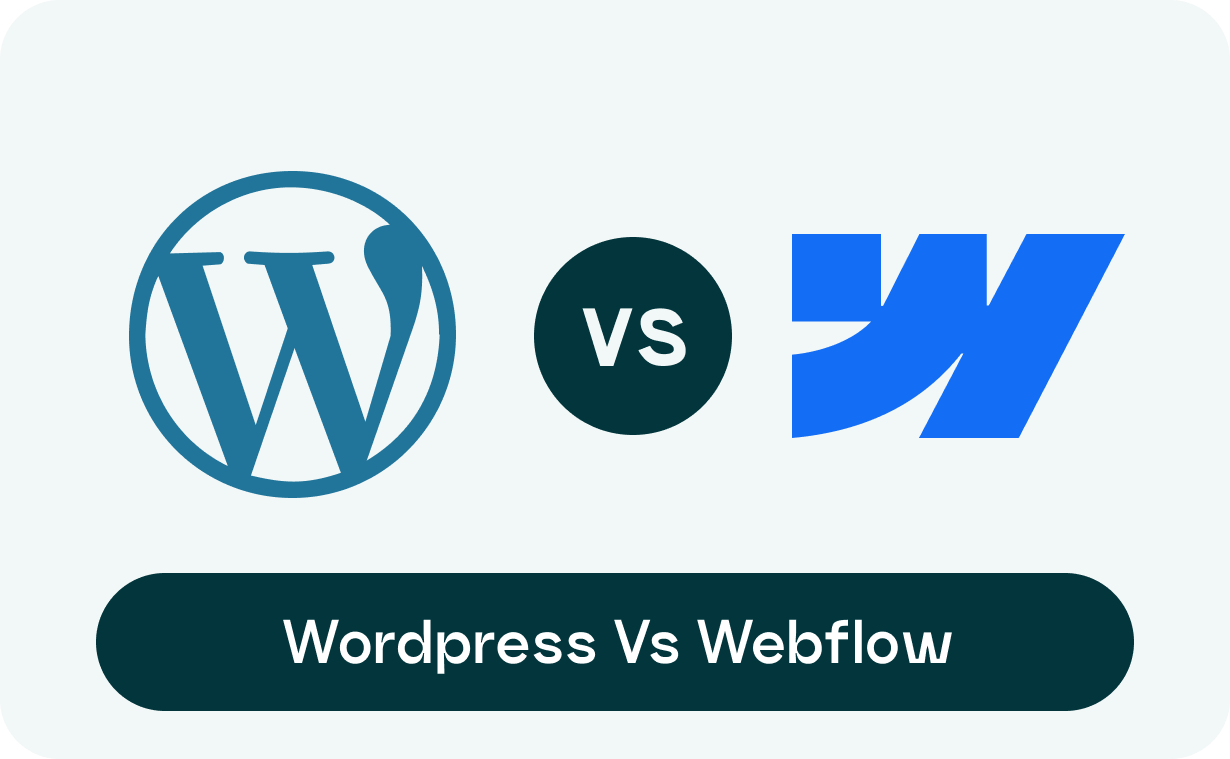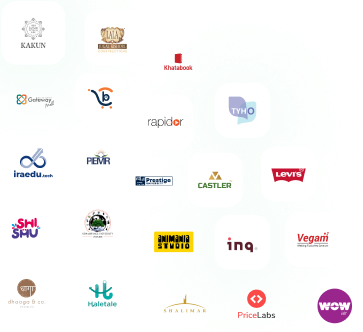Table Of Content
- WordPress vs Webflow: A Comprehensive Comparison
- WordPress vs Webflow: What You Need to Know First
- Ease of Use
- Customization and Flexibility
- Design and Templates
- Plugins and Integrations
- SEO Capabilities
- Security
- Support and Community
- Performance and Speed
- E-commerce Features
- Multilingual Support
- Pricing and Costs
- Conclusion
WordPress vs Webflow: A Comprehensive Comparison
WordPress Vs Webflow - In the ever-evolving world of website building, choosing the right platform can feel overwhelming. As we step into 2025, two platforms stand out for their unique strengths: WordPress vs Webflow. WordPress, the long-standing giant of the CMS world, continues to dominate with its flexibility and scalability. Meanwhile, Webflow has emerged as a powerful contender, combining design freedom with robust functionality.Whether you're a beginner, a designer, or a developer, understanding the differences between WordPress vs Webflow is crucial to making the right choice for your website. In this blog, we’ll break down the latest features, usability, customization options, and more for both WordPress vs Webflow platforms in 2025.
WordPress vs Webflow: What You Need to Know First
WordPress
WordPress remains the most widely used CMS in the world, powering over 45% of all websites in 2025. Its open-source nature, combined with a massive ecosystem of themes, plugins, and developers, makes it the go-to choice for businesses, bloggers, and developers alike. WordPress has evolved significantly, with advancements in its block editor (Gutenberg), improved AI-driven tools for content creation, and enhanced performance optimizations.WordPress is highly customizable, making it suitable for everything from simple blogs to complex enterprise websites. Its community-driven development ensures it stays at the forefront of web technology.Webflow
Webflow has solidified its position as a leading no-code website builder, particularly popular among designers and developers who want full creative control without writing code. In 2025, Webflow has introduced AI-powered design tools, advanced e-commerce features, and improved integrations with third-party apps. Known for its visual design interface and robust CMS capabilities, Webflow is ideal for users who want to create custom, responsive websites without relying on plugins or external tools.While Webflow is not as flexible as WordPress in terms of third-party integrations, it offers a unique blend of design freedom and functionality.Ease of Use
WordPress
WordPress has made significant strides in improving its user experience by 2025. The Gutenberg block editor has become even more intuitive, with AI-assisted content creation tools that suggest layouts, images, and text based on your input. However, WordPress still requires a learning curve, especially for beginners who need to manage hosting, plugins, and updates.For non-technical users, managed WordPress hosting services like WP Engine and Kinsta have simplified the process, offering one-click installations and automated updates. Page builders like Elementor and Divi have also become more advanced, allowing users to create complex designs without coding.Webflow
Webflow is designed for users who want a visual, no-code approach to website building. In 2025, its drag-and-drop editor has been enhanced with AI-driven design suggestions, making it even easier to create professional-looking websites. Webflow handles hosting, updates, and security, so users can focus entirely on design and content.While Webflow is user-friendly, it has a steeper learning curve compared to platforms like Squarespace. However, for designers and developers, Webflow’s interface offers unparalleled control over the design process.Customization and Flexibility
WordPress
WordPress is the undisputed king of customization. With thousands of free and premium themes, along with over 70,000 plugins, you can build virtually any type of website. In 2025, WordPress introduced more advanced customization options, including AI-powered theme generators and dynamic content blocks.For developers, WordPress’s open-source nature allows for complete control over the website’s functionality and design. Whether you’re building a portfolio, an e-commerce store, or a membership site, WordPress offers the tools to make it happen.Webflow
Webflow offers a unique level of customization through its visual design interface. In 2025, Webflow has introduced more advanced design tools, such as AI-driven layout suggestions and dynamic content integration. Unlike WordPress, Webflow allows you to design and develop websites visually, without needing to write code.However, Webflow’s customization options are limited compared to WordPress, especially when it comes to third-party integrations. While Webflow is highly flexible for design, it may not be suitable for users who need advanced functionality beyond its built-in features.Design and Templates
WordPress
WordPress offers an extensive library of themes, both free and premium, catering to every industry and niche. In 2025, WordPress themes have become more dynamic, with AI-driven design tools that adapt to your content and branding. Many themes now come with built-in integrations for popular plugins, making it easier to add functionality.The downside is that not all WordPress themes are created equal. Some may require additional customization to achieve the desired look, which can be challenging for beginners.Webflow
Webflow is renowned for its stunning, modern templates. In 2025, the platform has expanded its template library, offering more industry-specific designs. Webflow’s templates are fully responsive and optimized for mobile devices, ensuring a seamless user experience across all devices.Webflow’s templates are highly customizable, allowing users to tweak every aspect of the design. However, unlike WordPress, Webflow’s templates are not as widely available, and premium templates can be expensive.Plugins and Integrations
WordPress
WordPress’s plugin ecosystem is one of its biggest strengths. In 2025, the platform boasts over 80,000 plugins, offering everything from SEO tools to e-commerce solutions. Popular plugins like Yoast SEO, WooCommerce, and Elementor have become even more powerful, with AI-driven features and improved performance.The downside is that managing plugins can be overwhelming for beginners. Poorly coded plugins can also slow down your website or create security vulnerabilities.Webflow
Webflow offers a more limited range of integrations compared to WordPress. In 2025, the platform has expanded its app marketplace, but it still lags behind WordPress in terms of functionality. Webflow’s built-in features are robust, but they may not be sufficient for users who need advanced functionality.For example, while Webflow offers e-commerce capabilities, they are not as extensive as WooCommerce’s. Similarly, Webflow’s SEO tools are good but not as advanced as WordPress’s.SEO Capabilities
WordPress
WordPress remains one of the most SEO-friendly platforms in 2025. With plugins like Yoast SEO and Rank Math, you can optimize every aspect of your website, from meta tags to XML sitemaps. WordPress’s clean code and fast-loading themes also contribute to better search engine rankings.In 2025, WordPress has introduced AI-driven SEO tools that analyze your content and provide real-time suggestions for improvement. This makes it easier than ever to optimize your website for search engines.Webflow
Webflow has made significant improvements to its SEO capabilities by 2025. The platform now offers built-in SEO tools, including automatic sitemaps, clean URLs, and meta descriptions. However, Webflow’s SEO features are still not as advanced as WordPress’s.For users who prioritize simplicity, Webflow’s SEO tools are sufficient. However, if you need advanced SEO capabilities, WordPress is the better choice.Security
WordPress
WordPress’s security has improved significantly by 2025, thanks to advancements in core security features and plugins like Wordfence and iThemes Security. However, because WordPress is open-source, it remains a target for hackers. Regular updates and security best practices are essential to keep your website safe.Webflow
Webflow handles all security aspects for its users, including SSL certificates, DDoS protection, and regular updates. In 2025, Webflow has introduced advanced security features, such as AI-driven threat detection. For users who want a hassle-free experience, Webflow’s built-in security is a major advantage.Support and Community
WordPress
WordPress’s community is one of its greatest assets. In 2025, the platform boasts an even larger and more active community, with countless forums, tutorials, and resources available. However, because WordPress is open-source, official support is limited. Users often rely on third-party developers or hosting providers for assistance.Webflow
Webflow offers 24/7 customer support, including live chat and email. In 2025, the platform has expanded its support resources, including an extensive knowledge base and video tutorials. For users who value reliable support, Webflow is the better choice.Performance and Speed
WordPress
WordPress’s performance has improved significantly by 2025, thanks to advancements in caching plugins, CDN integrations, and optimized hosting solutions. However, performance can vary depending on the quality of your hosting and plugins.Webflow
Webflow’s performance is consistently strong, with fast-loading templates and built-in CDN. In 2025, the platform has introduced performance optimizations, ensuring a smooth user experience for all websites.E-commerce Features
WordPress
WordPress, with WooCommerce, remains a powerhouse for e-commerce in 2025. The platform offers advanced features, including product variations, subscriptions, and integrations with payment gateways. WooCommerce’s flexibility makes it suitable for businesses of all sizes.Webflow
Webflow’s e-commerce features have improved by 2025, but they are still not as robust as WooCommerce’s. The platform is ideal for small to medium-sized businesses that prioritize design and simplicity.Multilingual Support
WordPress
WordPress offers excellent multilingual support through plugins like WPML and Polylang. In 2025, these plugins have become even more advanced, with AI-driven translation tools.Webflow
Webflow has introduced built-in multilingual support by 2025, making it easier to create websites in multiple languages. However, it is not as flexible as WordPress’s solutions.Pricing and Costs
WordPress
WordPress itself is free, but costs can add up for hosting, premium themes, and plugins. In 2025, managed WordPress hosting plans start at around $10/month, while advanced websites can cost significantly more.Webflow
Webflow’s pricing starts at $12/month in 2025 for basic plans, with e-commerce plans starting at $29/month. While more expensive than WordPress, Webflow’s all-in-one pricing includes hosting, security, and support.Conclusion
In 2025, both WordPress vs Webflow will remain strong contenders in the website-building space. WordPress is the better choice for users who need flexibility, advanced functionality, and scalability. Webflow, on the other hand, is ideal for designers and developers who want full creative control without writing code.Ultimately, the choice between WordPress Vs Webflow depends on your specific needs and technical expertise. If you’re looking for a powerful, customizable platform, WordPress is the way to go. If you want a sleek, professional website with minimal effort, Webflow is the better option.The world’s First zero commission platform
Hire tech partners effortlessly
 If you're a non-tech founder looking for an agency or a tech founder looking for engineers.
If you're a non-tech founder looking for an agency or a tech founder looking for engineers. You can get your 5 best matches from 2800 in 5 mins, with 1000 data points tracked.
You can get your 5 best matches from 2800 in 5 mins, with 1000 data points tracked. Connect directly with no credit card needed!
Connect directly with no credit card needed!
You’re just a click away from the best talent.

